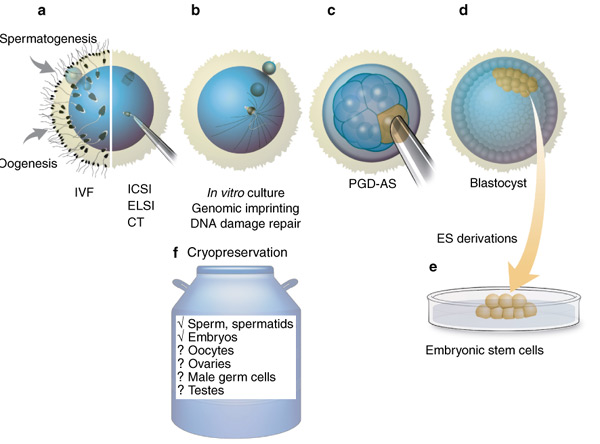
Many women today consider egg vitrification as an option to preserve their fertility because they do not want time to dictate their journey to motherhood.
Fertility preservation by egg vitrification
We live in a society in constant motion, freedom of choice and wide possibilities go hand in hand with social instability. This lifestyle means an extension of time that postpones those stages of life that have always been considered essential.
Being independent, finishing school, finding a job, everything is delayed. Even the idea of becoming parents is postponed, without taking into account that age plays a vital role in fertility.
Waiting too long can affect your ability to become a parent. For this reason, many women are considering egg vitrification with the Best IVF specialist in India to maintain their fertility.
Why should I vitrify my eggs?
There are two main reasons to opt for egg vitrification, social reasons, and health reasons. From a social point of view, many women consider egg vitrification because they still do not feel ready or because other things take precedence over childbirth at their current stage of life, so they decide to postpone their motherhood.
Considering that after the age of 30, women’s fertility begins to decline, and a sharp decline occurs from the age of 35, the best way to increase the chances of future pregnancy of their genes is to vitrify the eggs.
The second reason is related to a health problem. When a woman has to undergo radiotherapy or chemotherapy, aggressive ovarian surgery, or even when endometriosis is severe. In all these cases, the vitrification treatment of the eggs is recommended to prevent them from being damaged by the aggressiveness of the therapy. The best IVF specialist in India has a long history of helping couples and single women from all over the world fulfill their dream of becoming mothers and fathers.
A simple procedure that incorporates the best conservation techniques.
Egg vitrification is a simple and safe procedure that is divided into three phases: stimulation, removal of the ovaries, and vitrification.
During ovarian stimulation, the patient takes medication to stimulate the ovaries and increase the number of follicles that mature in one cycle. Stimulation is constantly under control using ultrasound examinations. The second phase consists of the puncture of the ovaries: This is a quick and painless procedure that is performed transvaginally and under the effect of sedation, which lasts 15/20 minutes.
The last stage of the treatment is the vitrification of the eggs. At this stage, mature eggs are vitrified and stored in the laboratory. The quality of the eggs remains unchanged over time, so if a woman decides to use them one day, the pregnancy rate will be higher.
Safe and permanent treatment
At best, IVF specialists in Indian doctors use oocyte and embryo vitrification techniques. In the laboratory, experts use the most modern procedures, which allow them to perform completely safe maintenance. It is important to note that although vitrification does not have expiratory limits, it is necessary to know the age limits for assisted reproduction techniques.
At what age should I vitrify my eggs?
Age is known to play an important role in the search for pregnancy. Of course, this also applies to the decision to perform vitrification treatment of eggs to preserve fertility.
The ideal time for egg vitrification is before the age of 35 when the ovarian reserve has not yet undergone a normal physiological collapse. At that time, the success rate is approximately 60% with 10 or 12 oocytes.
Age is a critical factor in oocyte quality and the success of future assisted reproduction treatments.
Indications for Egg vitrification
The oocyte vitrification technique is used in assisted reproduction centers for two main indications, which are listed below.
Preservation of female fertility
In the case of preserving female fertility, it can be performed for health reasons (if the patient is about to undergo, for example, an oncological treatment that will affect her fertility) or simply because the woman wishes to postpone motherhood.
If you are thinking about preserving your fertility to have a child in the future, we recommend that you start by getting a fertility report. In 3 simple steps, it will show you a list of clinics that match your preferences and meet our strict quality criteria. In addition, you will receive an email with helpful tips on how to visit a fertility clinic for the first time.
Optimizing IVF cycles
Egg vitrification enables better planning of IVF cycles. This technique offers the possibility of oocyte accumulation in individuals with a low response (vitrification of eggs obtained after several ovarian stimulations). In addition, oocyte vitrification would also allow the use of cryopreserved donor eggs without the need to synchronize the donor with the egg recipient.
Egg vitrification process
Oocyte vitrification is an ultra-rapid freezing technique that uses high cooling rates and uses cryoprotectants to protect eggs from damage during the process.
Cryoprotectants are molecules that reduce the water content inside oocytes and thus protect them from the effects of low temperatures by preventing the formation of ice crystals.
In general, the treatment of oocyte vitrification is divided into two distinct steps: one depends on the gynecologists and the other depends on the embryologists of the laboratory.
